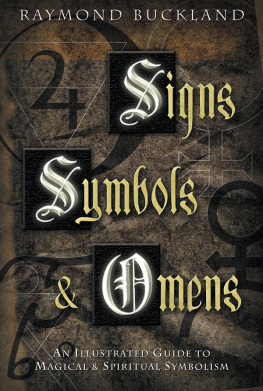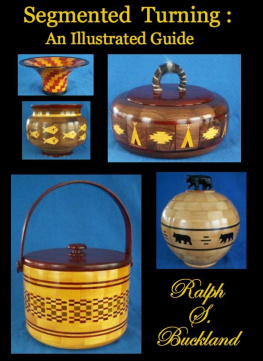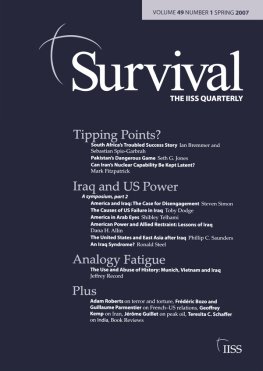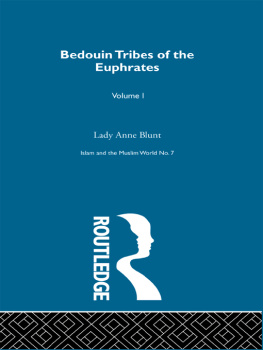T ALES FROM THE A RAB T RIBES
The tales contained in this collection are part of the oral traditions of the great Arab tribes of Southern Iraq. They have the authentic flavor of The Thousand and One Nights, and are alive with the same robustness as most Islamic popular legendsfull of taste for heroic gesture, a voluptuous delight in scent and colour, and a broad, earthy humour.
Charles Campbell captures the elusive cadences of style, flowing and elegant. This is an unusual volume with an appeal for all who like romance and adventure and who take pleasure in good stories, well told.
John Buckland-Wrights delightful drawings capture the character and atmosphere of the people and the stories.
First published in 2007 by
Kegan Paul International
This edition first published in 2010 by
Routledge
2 Park Square, Milton Park, Abingdon, Oxon, OX14 4RN
Simultaneously published in the USA and Canada
by Routledge
711 Third Avenue, New York, NY 10017
Routledge is an imprint of the Taylor & Francis Group, an informa business
Kegan Paul, 2007
All rights reserved. No part of this book may be reprinted or reproduced or utilised in any form or by any electronic, mechanical, or other means, now known or hereafter invented, including photocopying and recording, or in any information storage or retrieval system, without permission in writing from the publishers.
British Library Cataloguing in Publication Data
A catalogue record for this book is available from the British Library
ISBN 10:0-7103-1131-1 (hbk)
ISBN 13: 978-0-7103-1131-3 (hbk)
Publishers Note
The publisher has gone to great lengths to ensure the quality of this reprint but points out that some imperfections in the original copies may be apparent. The publisher has made every effort to contact original copyright holders and would welcome correspondence from those they have been unable to trace.
Preface
I N Victorian days it was customary to preface a translated work with an apology for imperfections in the translation. I would say that I am not an interpreter such as those of the United Nations, who can listen to a long speech in one language and who afterwards can render it accurately and with perfect memory in another language. I am also conscious that these stories when told with a wealth of gesture and expression of face and voice were things of vivid beauty like rare butterflies, and in reducing them to paper it is as if they have been killed and pinned in a collectors cabinet.
These stories belong to the great Shia tribes of Southern Iraq. I first came into contact with these tribes when, coming over from the Western Desert in the winter of 1942, I halted on the road near Ur, and engaged a couple of likely-looking tribesmen to show me what local shooting there was, and to act as guides. The next day we drove far into the desert after bustard, and coming over a rise in the ground we saw before us a group of long, low, black tents; in my ignorance I turned to my two guides and asked them what the tribe of these bedouin was. Their faces registered horror and surprise, and they said: Those are not bedouin; they are Arabs. Not having been previously aware of this distinction, I asked them how they told the difference between bedouin and Arab. They replied: We thought because you speak Arabic you would know the difference. They went on to point out large numbers of sheep dotted around the horizon and they explained that had there been a large number of camels with a few sheep, then bedouin would have been indicated. Instead there was a large number of sheep with a few camels, indicating Arabs. They had to go on to explain that by Arabs they meant the great landowning Shia tribes, who are in the main cultivators of rice, dates, barley and a variety of other crops, but they send out their sheep on long treks through the desert in charge of some of their families in search of grass.
Most of the Arab tribes are dwellers in houses or clean, cool huts made of reed matting, which allows for a constant current of air through the hut, and prevents the temperature from rising to that of an oven in the hot sun, like a house. Many of these stories were told in a large guest house or tent pitched amongst the houses, with a background of sound varying from that of the cooking of a meal of several roast sheep to the powerful thump, thump, thump, of the great pumps. These pumps deserve mention, since they are often a tribes principal pride and source of wealth. At one place I was surprised to hear that a boys name was Rustam, since this name is more common amongst Persians and Kurds than amongst Arabs, but it was explained to me that he was named after the pump, and I understood when I saw the name Rustom stamped on an iron plate on the great cylinder.
The Arab tribes have a great military history of which they are justly proud. It is long and somewhat complicated, and to give in full the history of a single tribe as told by the sheikhs would fill a book greater in size than this. I will, however, give a prcis of the history of that great group of tribes which were known as the Muntafiq.
The Muntafiq was a confederation of the Shia tribes living around the Gharraf River and around what is now the town of Nasiriya, drawn together for the purpose of opposing the Turks by Saadun of the Sunni family of Es Shabib, who became the founder of the house of Saadun. The tribes of the Muntafiq used to raid the Turks in the Basra area and harry their convoys on the road to Baghdad. However, in 1775 a new threat developed in South Iraq in the form of a Persian advance on Basra, and the Saadun leaders of the Muntafiq apparently decided that the Turks were the lesser evil, for they sent a force of their cavalry to assist them and stationed it at the ancient village of Zobeir.
Throughout the siege of the city the Muntafiq cavalry remained at Zobeir, which is about ten miles from Basra and separated from it by a salt plain liable to flood. The tribal horse, under Sheikh Abdulla es Saadun and Sheikh Thamir es Saadun, could not have been of much assistance to the garrison of the city, for the fighting was taking place in the belt of palm trees interspersed by numerous creeks which surrounds the town on all but one side; and the Persian infantry were assisted by that redoubtable tribe of watermen, the Kaab, who were particularly valuable in the area of marsh which used to extend from what in the last war was the military camp area of Makina to what is now the modern port of Maqil. It appears to have been a major error that the Muntafiq did not bring their footmen and boats down to assist in the defence of Basra, for the country was quite unsuited to cavalry; but it must be remembered that the Muntafiq could only have been lukewarm allies of the Turks, whom they had been fighting so recently.
Basra surrendered to the Persians in the spring of 1776, after a defence in which the Turkish garrison did not distinguish themselves. The Muntafiq force, however, remained at Zobeir, from where they controlled all exits from Basra to the desert, and the Euphrates route to Baghdad. It soon became apparent to Ali Muhammed, the Persian commander, that a port without a hinterland is a doubtful acquisition, but he took no measures against the Muntafiq tribesmen until 1778, when sheer boredom and the necessity of tending to their crops had reduced the Muntafiq force at Zobeir to practically nothing. Then, after a surprise attack, the village fell easily to the Persians, and Ali Muhammed ordered the Muntafiq garrison to be put to the sword.










